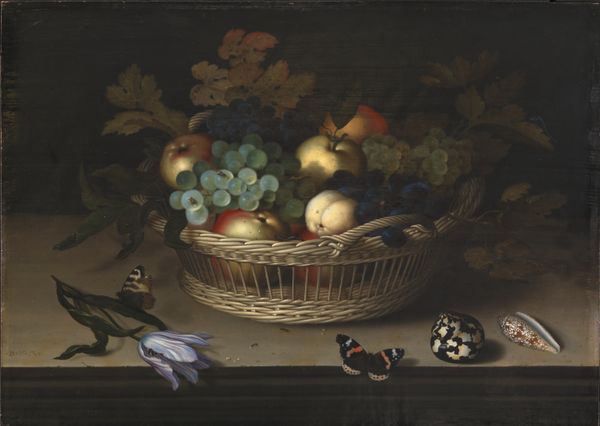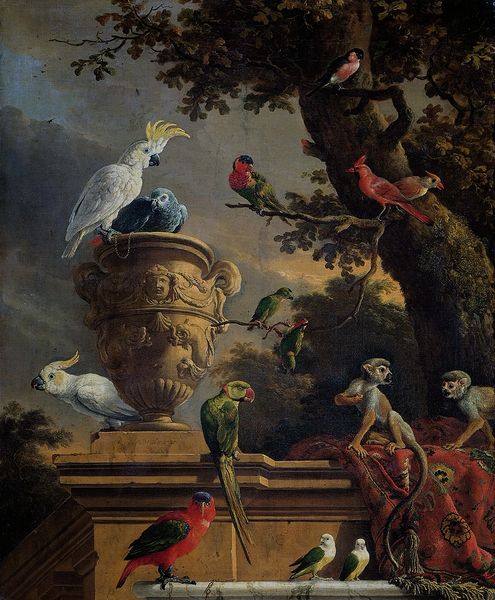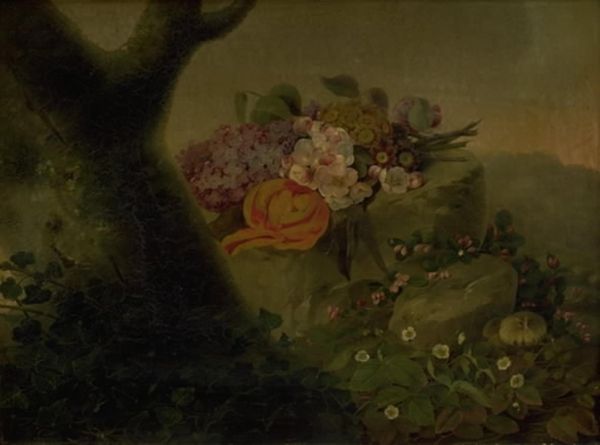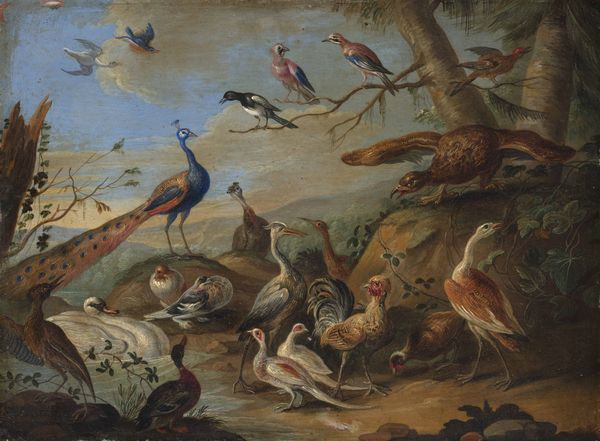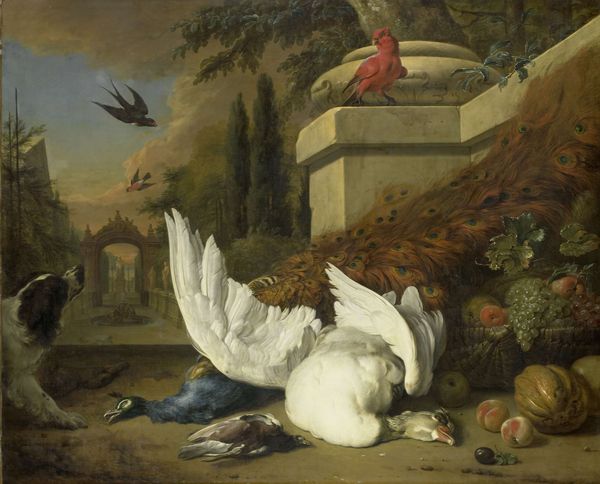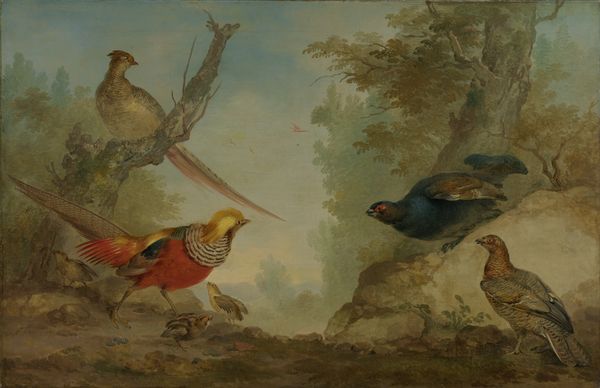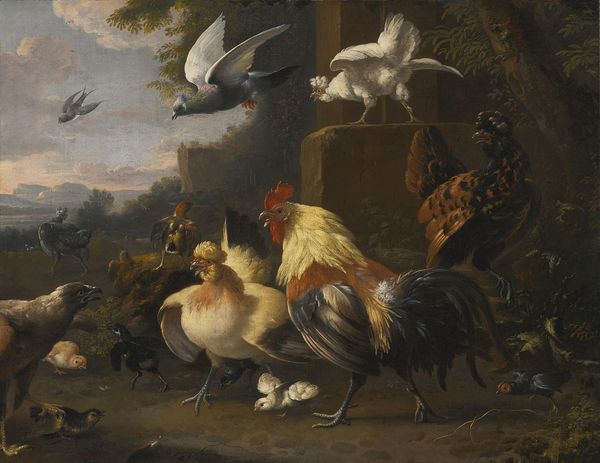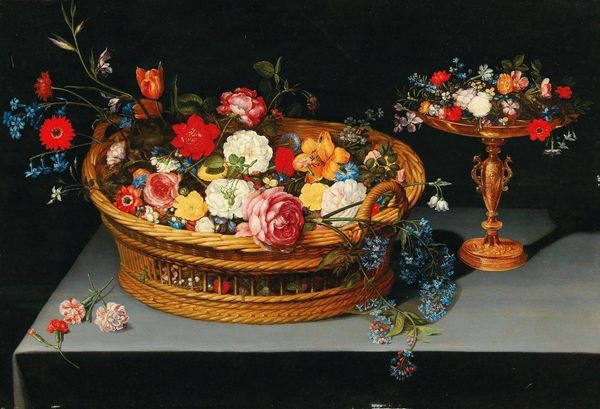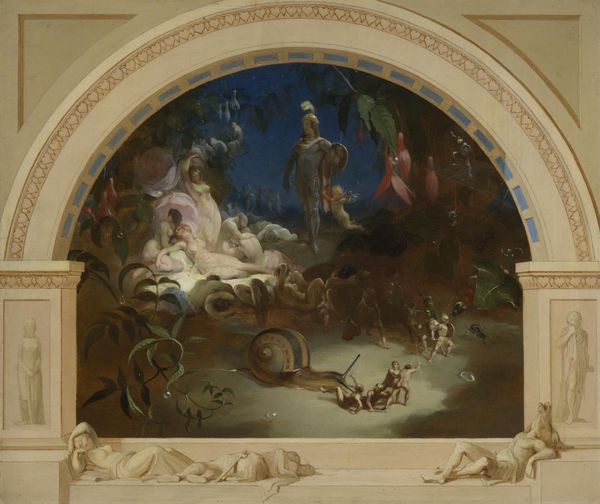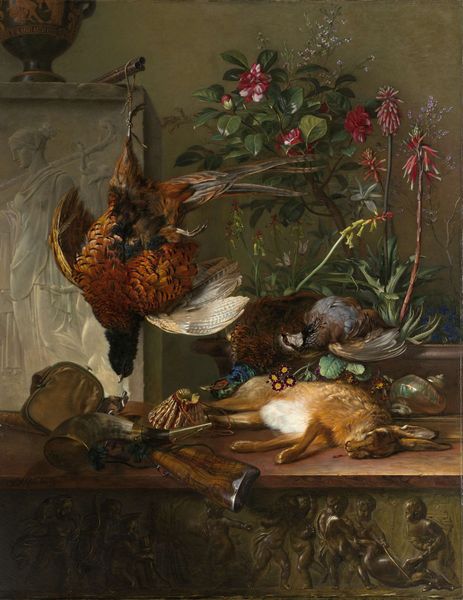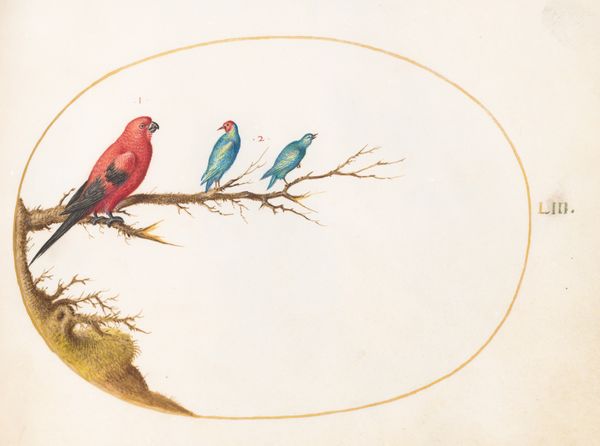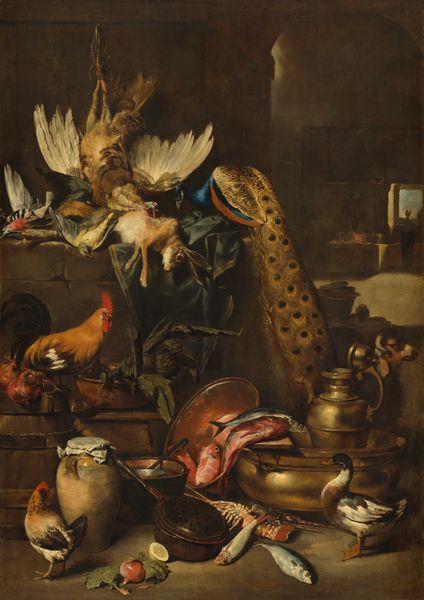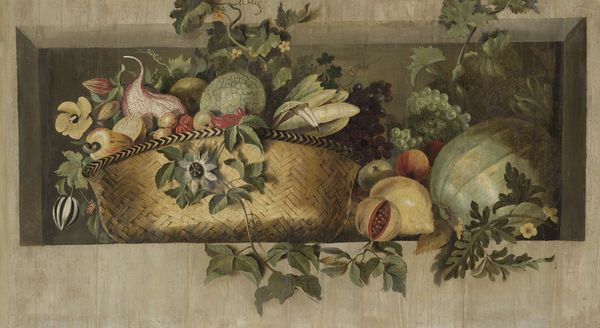
oil-paint
#
baroque
#
dutch-golden-age
#
oil-paint
#
figuration
#
realism
Dimensions: 22 cm (height) x 30.5 cm (width) (Netto)
Editor: Here we have "Fruit Still Life with Two Parrots," created in 1623 by Balthasar van der Ast. It's an oil painting currently housed at the SMK in Copenhagen. The arrangement of fruit and vibrant colours feel incredibly rich. How would you begin to approach analyzing its formal qualities? Curator: Precisely. We must attend to the arrangement of forms. Notice how the composition adheres to a pyramidal structure, the apex defined by the upper fruit. Consider the texture achieved through the artist’s rendering of light on diverse surfaces: the matte skin of the peaches versus the reflective glaze of the blue and white porcelain. Observe also the contrasting color temperatures – cool blues of the parrot against the warm reds of the cherries. Editor: The colours certainly do create a striking contrast, drawing your eye around the piece! What do you make of the two parrots, formally speaking? Curator: The parrots serve a crucial compositional role. They provide not only vibrant colour contrasts but also direct the viewer’s gaze. Note how the eye lines of each parrot lead the observer deeper into the arrangement of fruits, encouraging us to scrutinize the meticulous detailing and surface variations within the still life itself. The painting teases with a dynamic interplay of color and shape, almost a chromatic harmony of nature's bounty. Editor: So, it’s the interplay between form and colour which creates meaning? Curator: Meaning emerges from form, undoubtedly. Van der Ast’s technical prowess shines through his depiction of varied textures and forms, creating a dynamic viewing experience that celebrates nature's diversity and artifice. We, as interpreters, can deconstruct this to study how an image's message comes into existence through composition. Editor: This has definitely reshaped how I view the painting, from just an appealing arrangement of fruits to this interesting exercise in balancing shapes, lines, colours and gazes. Thank you. Curator: An important skill indeed! Viewing the piece in terms of its composition creates new meaning in the process of looking.
Comments
No comments
Be the first to comment and join the conversation on the ultimate creative platform.
